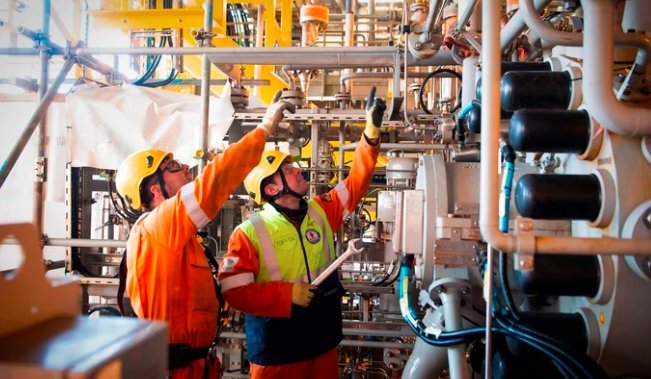Britain faces a serious gas shortage risk as North Sea production drops sharply in the coming years. The National Energy System Operator issued a strong warning on November 27, 2025, pointing to a steep decline that could leave the country relying on imports for over 90 percent of its gas needs by 2035.
This alert highlights how falling domestic output threatens energy security, especially during cold winters. Experts say quick action is needed to avoid supply gaps and higher costs for homes and businesses.
NESO Issues Urgent Alert
The National Energy System Operator, known as NESO, released its first Gas Supply Security Assessment this week. The report warns of emerging risks to Britain’s gas supply starting in the 2030s.
Domestic production is set to fall from about 27 billion cubic meters this year to just 5 billion by 2035. That means an average drop of 13 percent each year, the fastest decline in decades.
NESO tested different scenarios, including harsh winters and lost import routes. Under normal conditions, supplies might hold up, but extreme events could cause shortfalls.
The group stressed that gas remains key for heating and power through the next decade. Without changes, the UK could face blackouts or high prices during peak demand.

North Sea Production in Freefall
North Sea gas fields have supplied Britain for over 50 years, but they are running low. Output fell 10 percent in 2024 compared to 2023, hitting the lowest level since 1973.
Experts point to aging wells and fewer new finds as main causes. Only about 14 percent of remaining reserves are worth drilling under current rules.
Government policies add to the pressure. A high tax rate on producers and a ban on new licenses speed up the decline.
Even with more drilling allowed, production would still drop by over 70 percent by 2035. This leaves little room to boost output quickly.
Rising Dependence on Imports
Britain already gets most gas from abroad. Norway supplies around half, with the rest from US liquid natural gas and Qatar.
By 2030, imports could cover 80 percent of needs, rising to over 90 percent by 2035. This shift raises risks from global events like wars or supply cuts.
Recent examples show the danger. In 2022, Europe’s gas crisis after Russia’s invasion of Ukraine drove prices sky high.
NESO warns that losing a key pipeline or terminal could tip the balance. The UK has limited storage, making it vulnerable to sudden disruptions.
Here are key import sources and their shares:
- Norway: 50 percent of current supply
- US LNG: About 20 percent, growing fast
- Qatar: 10 to 15 percent, steady but far away
- Domestic North Sea: Dropping to under 10 percent soon
Political Storm Over Energy Plans
The report sparked debate in Parliament. Opposition leaders call it a wake up call against current policies.
One shadow minister said the decline stems from high taxes and exploration bans. They argue this hands control to foreign suppliers.
In contrast, the energy secretary defends the shift to clean power. He says relying on fossil fuels ties Britain to unstable global markets.
Environmental groups agree, noting that renewables like wind and solar offer true security. They point to falling gas demand as homes switch to heat pumps.
Recent events fuel the argument. In early 2025, mild weather kept supplies stable, but experts fear colder seasons ahead.
Industry Views and Expert Analysis
Analysts say NESO’s forecasts might be too hopeful. One energy firm predicts import terminals could hit full capacity by 2031.
Oil and gas companies push for more North Sea work to slow the drop. They warn jobs and revenue are at stake, with thousands employed in the sector.
On the other side, clean energy advocates see opportunity. They note wind power now generates over 30 percent of UK electricity, up from 25 percent last year.
A balanced approach might include more storage and diverse imports. Building new facilities could cost billions but secure supplies.
| Year | Projected North Sea Gas Production (bcm) | Import Dependency (%) |
|---|---|---|
| 2025 | 27 | 66 |
| 2030 | 12 | 80 |
| 2035 | 5 | 90+ |
This table shows the expected decline based on current trends.
Steps Toward Safer Energy Future
Britain can take action to ease these risks. Boosting renewable energy and efficiency could cut gas use by 20 percent in five years.
Investing in storage and new tech like hydrogen might help too. International deals could lock in reliable imports.
The government plans more talks with industry soon. Public input will shape the path ahead.
As this story develops, share your thoughts in the comments. What do you think Britain should do to secure its energy? Pass this article to friends and join the discussion.


















